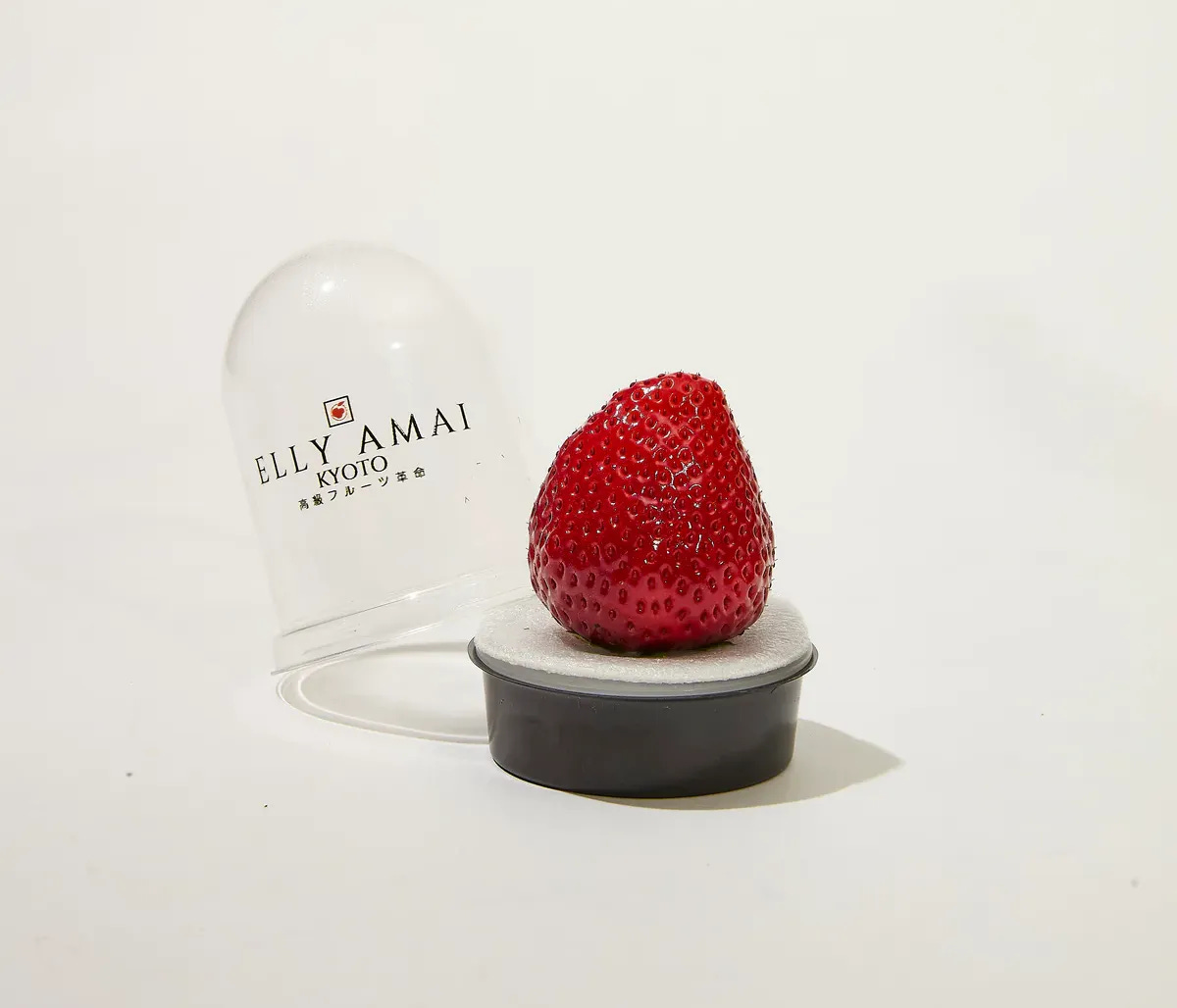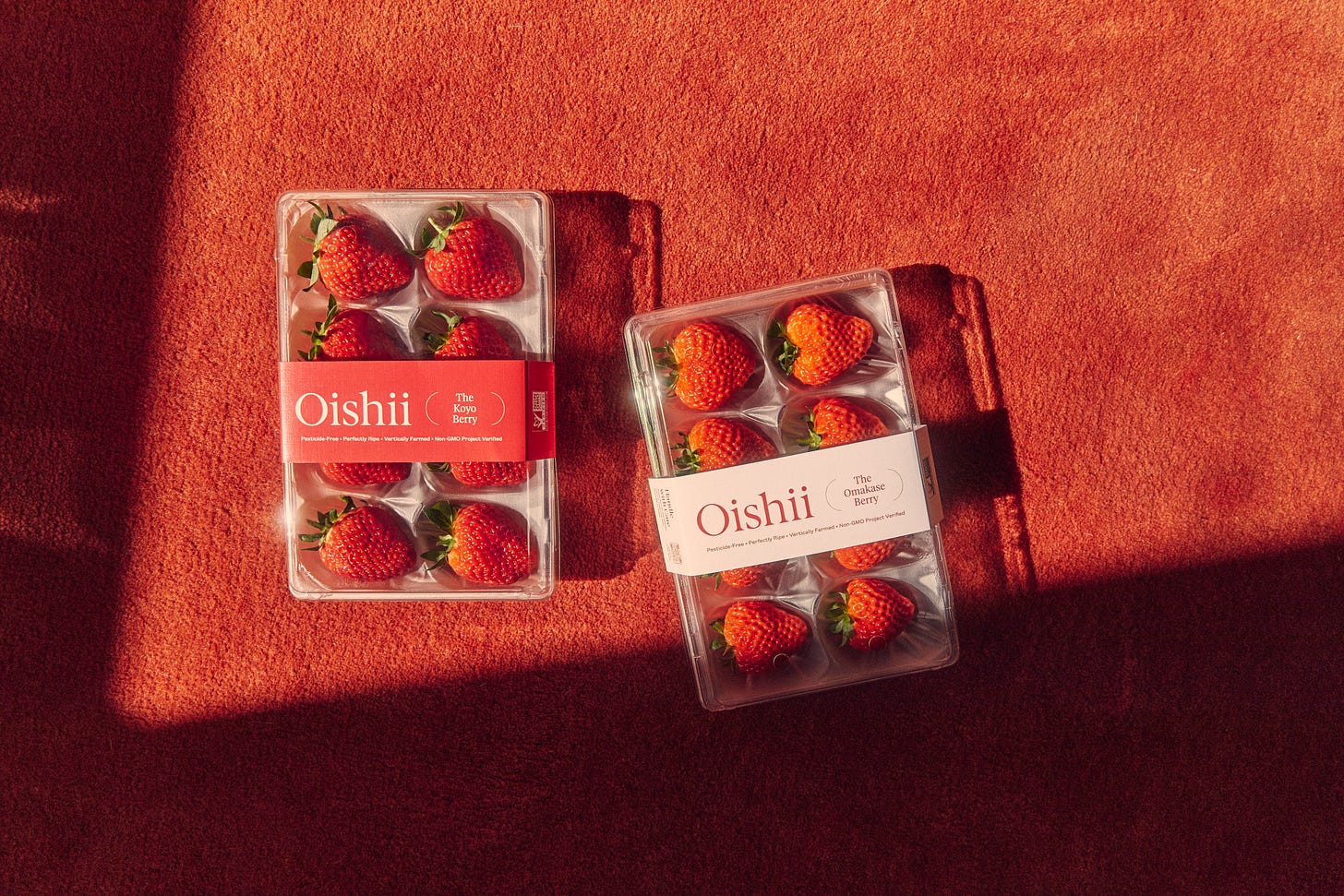🍓Strawberries are having a moment. We're fine paying $10 for a handful, or even $20 for just one

Strawberries have cast a spell on consumers.
We can’t seem to get enough of the sweet juicy red fruit. We’re eating it, we’re wearing cute strawberry prints on our clothes, social media celebrities are raving about pricey exotic varieties of the fruit, and TikTok influencers such as scent expert Paul Fino (with more than two million followers) are creating strawberry-inspired fragrances.
At a time when household budgets are tight and Americans are feeling stressed about their finances, tariffs-triggered price increases, and possible grocery store shortages, we seem to be fine paying $10 for just a handful of the fruit, or even $20 for only one.
To be fair, the $20 single strawberry is from Elly Amai, a seller of luxury Japanese fruits.
This particular “Tochiaika” strawberry is currently sold out on the vendor’s website, where it’s described as coming from the Tochigi Prefecture north of Tokyo and said to have a “fresh texture, mellow aroma, and refined sweetness that spreads in your mouth.”
According to its supplier, “‘Tochiaika’ is not just a crop, but a ‘feeling’ that we have cultivated with love.” It’s also perfectly primed to become a viral sensation.
In the US, the uber-expensive and much-wanted single strawberry was available at a few locations of the upscale California-based grocery store Erewhon, which also sells a 64-ounce bottle of “hyper oxygenated water” for $26 and a $20 Hailey Bieber Strawberry Glaze Skin Smoothie made with almond milk, organic strawberries, bananas, avocado, collagen peptides, hyaluronic acid and sea moss gel, among other ingredients.
While strawberries are always a popular fruit, consumers are fascinated with exotic strawberries that are produced in smaller batches and also sell out quickly, Phil Lempert, grocery and retail industry analyst and editor of SuperMarketGuru.com, told Bagable.com.
“The strawberries that you get in conventional supermarkets can be tasteless. The varieties that are grown differently, or are imported, may cost more but they offer an elevated taste experience,” he said. “You can make an occasion with them. Have just a few with champagne or dip them in chocolate. It’s an affordable indulgence that consumers are willing to splurge on and enjoy. It’s a break from the stress in their daily lives.”
Fino has his own reasons for cheering on the strawberry.
“Strawberry felt like the underdog. Everyone was doing cherry. Don’t get me wrong, I love cherry, but it started to feel ‘expected,’” Fino said in a statement to Bagable.com.
“Strawberry has this nostalgic, flirty, just-bit-into-it energy that’s juicy without being sticky-sweet,” Fino added. “It’s giving Y2K lip gloss meets modern skin scent. And let’s be honest, it was just strawberry’s time!”
Gen Z’s searching for “next cool thing”
[Video credit: Oishii]
New Jersey-based Oishii uses indoor vertical farming, leveraging technology and AI to replicate the perfect conditions in Japan to grow its strawberries varieties in the US.
The idea for it was the brainchild of cofounder Hiroki Koga.
“He was born and raised in Tokyo. In Japan, there are over 300 different varietals of strawberries. Each prefecture in Japan has its own unique strawberry,” Melissa Cohn, director of brand and marketing at Oishii, told Bagable.com.
“Hiroki grew up around a culture of thoughtfully grown fruit that was meant to show up on the table as part of a celebration, or gifted as part of an occasion, like a birthday party or someone’s graduation,” Cohn said.
Koga came to the US to pursue an MBA from the University of California, Berkeley. “California is one of the best states in the US for fruits but he was still disappointed when he bought produce at the grocery store that looked great but the taste just wasn’t there. This was the case with strawberries,” she said.
California is the second-largest global producer of strawberries after China, said Brad Rubin, sector manager with Wells Fargo Agri-Food Institute.
“With three distinct growing regions, California produces 90% of US strawberries,” he said. “Summer is usually when supply is steady and berries are cheapest. Berries are highly perishable, so we don’t overgrow them,” he said.
“In the winter, berries are grown in Florida and imported from Mexico to provide year-round supply. Mexico is our largest strawberry trading partner,” said Rubin, adding that demand for strawberries has been steady. “Strawberries are known to be nutritious and delicious. Anything not used in the fresh market is [usually] sent to the processors for freezing or juicing,” said Rubin.
Koga got the idea for Oishii when he was studying in California. He had gained knowledge about vertical farming while previously working at a consulting firm in Japan.
After graduating with an MBA, Koga launched Oishii in 2017 with the goal of introducing Japanese fruit culture to the US.
Strawberries are very delicate and notoriously hard to grow using vertical farming, explained Cohn.
“But Hiroki cracked the code of growing them indoors using bees to do all of the pollination, which really allowed us to expand our production because we don’t require people to hand pollinate each flower.”
Koga traveled all over Japan, seeking out the perfect varieties of the fruit to bring to the US.
“The one he wanted to start perfecting for the vertical farm was the Omakase Berry. We brought the seedlings over from Japan to grow them here,” said Cohn. “When people taste this berry, they are so taken aback by its quality. It has an intense fragrance, a high sweetness and creamy texture.”
The Omakase Berry, which hails from the foothills of the Japanese Alps, was Oishii’s first vertical grown strawberry. “Our first customers in 2019 were chefs at Michelin-starred restaurants,” she said.
Today, Oishii produces three varieties of strawberries (without pesticides or GMOs) — the Omakase Berry, the Koyo Berry that originated from just outside Tokyo, and the Nikko Berry. It takes about 40 days — pollination to fully ripe berry — to harvest the fruit.
“Our farms don’t sleep because the plants always need to be tended to,” Cohn said.
The brand also now grows its first vertically farmed “fruit tomato” called the Rubi Tomato
The business operates two vertical farms in New Jersey and last year opened a third — the Amatelas Farm — a 237,500 square-foot facility in Phillipsburg, New Jersey that utilizes solar energy to power operations. The farms are designed to recycle 95% of the water that’s used.
To date, the company has raised over $200 million in funding and Oishii strawberries are available in more than 250 stores, including Whole Foods stores in the Northeast and regional ShopRite and other grocery stores.
The Omakase and Koyo berries are packed in trays of six, eight or 11 pieces (extra large to medium sized per tray) or 20 mini strawberries per tray. The fruits rest on a hammock-like base to avoid their skins from becoming dented. Prices vary from $9.99 to $11.99 a tray.
Despite their high price points, Cohn said some customers enjoy make weekly purchases of Oishii strawberries and “they tell us about it.” “But we also have customers who purchase our strawberries for special occasions, which is how it is in Japan,” she said.
Gen Z consumers are especially excited about Oishii strawberries, she said.
“The younger consumer is very conscious of what they are putting in their body and on their skin and they’re always looking for the next cool thing that’s made it on to TikTok or Instagram,” Cohn said. “They’re very conscious of authenticity and favor brands that have a good products and don’t just want to be mass market.”
The goal, she said, is to make Oishii berries accessible to more consumers by continuing to bring down prices.
“The Nikko Berry, our newest product innovation and third strawberry varietal, grows more berries per plant than our other varietals. This has allowed us to launch trays for as low as $7.99, our lowest priced product to date,” she said. “Three to four years ago, we were $50 for one tray.”
“It's a well-priced offering amidst escalating prices in a category already facing issues that range from product inconsistency to spoilage and food waste,” Cohn said. “Prices across our current product mix are not anticipated to increase."








